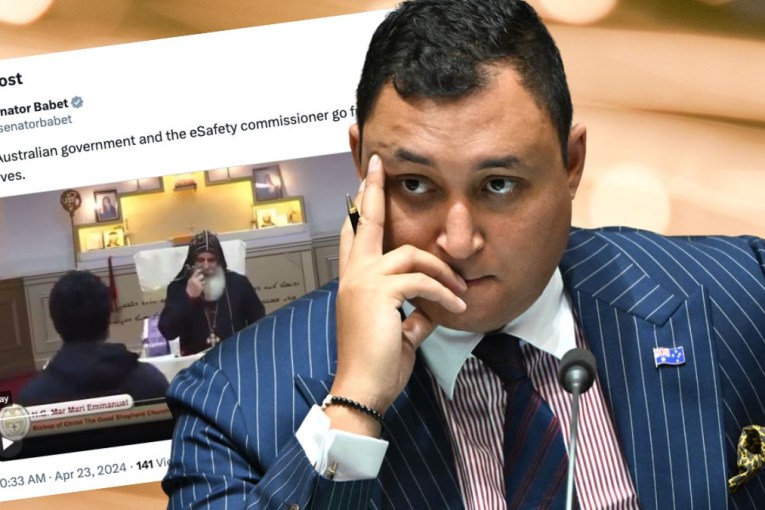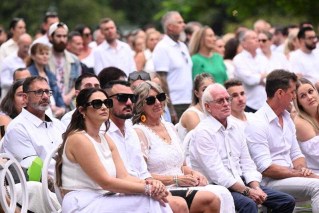How Man Haron Monis split the High Court
This week’s hostage tragedy in Sydney’s Lindt Cafe will cast a long shadow. It will force us to rethink our readiness for emergencies and the adequacy of our criminal justice system.
There has already been debate about NSW’s bail laws, in light of the fact that the hostage taker Man Haron Monis was on bail facing charges of being an accessory to the murder of his ex-wife, Noleen Hayson Pal, when he took 17 people hostage. Café manager Tori Johnson and barrister Katrina Dawson were killed. Monis also died.
A different part of Australia’s justice system provides a backdrop to Monis’s madness. A report in the Sydney Morning Herald claims “it has been Monis’s ongoing legal battle over his conviction for penning the poisonous letters to the families of dead Australian soldiers between 2007 and 2009 that has consumed him”.
This may not be idle speculation. Just last Friday, Monis had been pursuing that legal battle in the High Court of Australia’s Sydney courtroom, 100 metres away from the Martin Place cafe.
• Why was the Sydney gunman on our streets?
• Abbott says Sydney siege gunman was ‘sick’
Monis’s obsession was not about the truth. He never denied writing offensive letters to the bereaved, nor did he show remorse for doing so. Indeed, he pleaded guilty last year and received a sentence of community service and a good behaviour bond.
Rather, his obsession was about the law. He has always maintained that the federal offence he was charged with and sentenced under – using a postal service to cause offence – was unconstitutional.
His argument is similar to one made in the United States a few years ago, after a fringe sect, the Westboro Baptist Church, picketed soldiers’ funerals with banners such as “God hates fags”. The US Supreme Court bench ruled eight members to one that a civil claim against the sect’s members for damages undermined their right to freedom of speech. But Australia’s constitution is different. We don’t have a Bill of Rights and only a narrow “freedom of political communication”. Monis’s constitutional claim was no certainty.
But here’s the thing that troubles me: despite several High Court hearings, and a full court judgment last year, the High Court has never resolved his claim. When it did issue its judgment on Monis’s arguments in February last year, an extremely rare thing happened.

Monis said his letters to the families of dead soldiers were ‘political’.
The Court split evenly. Chief Justice Robert French and Justices Kenneth Hayne and Dyson Heydon agreed with Monis that the federal offence was unconstitutional, while Justices Susan Crennan, Susan Kiefel and Virginia Bell held that it was constitutional.
Because the Monis case was an appeal from NSW’s top court, the tie meant that the NSW decision stood. And, because the NSW Court of Appeal had already ruled against him, that meant that Monis lost his High Court challenge, despite the support of exactly half the Court’s judges.
To be clear, all of this was perfectly legal and proper. But I don’t think that this outcome was just. That’s because we still don’t know if the crime of using a postal service to cause offence is constitutional.
If anyone else has sent an offensive letter (or sends one today, say to Monis’s family) and is convicted of that same crime, then he or she is perfectly free to take a constitutional challenge all the way to the High Court for a fresh ruling. Anyone, that is, except Monis and his co-accused, who already lost that argument by a tie-breaker. I don’t envy the lawyers who had to explain all this to Monis.
It doesn’t have to be this way. For starters, there never have to be such ties in our national court. Australia’s High Court typically sits an odd number of judges to avoid ties, including a full bench of seven judges for constitutional cases like Monis’s.
But only six judges heard Monis’s appeal, because the seventh – Justice William Gummow – was scheduled to retire a week after the case was heard. In accordance with the usual practice, Gummow had stopped hearing cases altogether months earlier to avoid the risk that his retirement would come before the Court’s decision.
This same problem arises each and every time a High Court judge approaches retirement. Indeed, it’s happening right now.
The Court is scheduled to hear six judge cases in important matters through to June next year because two High Court judges are retiring in succession. Any one of them could be another tie.
Cases already at risk of being resolved, perhaps irreversibly, by a tie breaker include regulatory action over Sydney’s radio hoax tragedy, a native title claim over a World War Two training ground, and the aftermath of the collapsed tourism, property and finance group, Octaviar bankruptcy.
This situation is totally unnecessary. In Canada, judges are allowed to participate in judgments up to six months after their retirement. And when Canada’s top court recently found its numbers reduced to eight because of a constitutional challenge to one judge’s appointment, it seemingly responded to a likely tie in one case by scheduling the case to be argued again after the ninth judge was finally appointed.
In Australia, the same problem could be avoided by the government appointing the incoming judge a few months ahead of the outgoing judge’s retirement. That solution will cost a bit more in extra salary, staff and office space for the incoming judge, but there will also be savings in resolving legal uncertainty. For instance, the split outcome in Monis’s case could have been avoided if Justice Stephen Gageler had been appointed just one week earlier.
For cases not resolved in this way, there is another solution: simply allow people who lose because of a tie to bring another challenge if they wish. As it happens, that’s exactly why Monis was in the High Court last Friday. His counsel was seeking to have the Court hear his challenge again. The Commonwealth Director of Public Prosecutions argued that Monis should not be allowed a second bite at the cherry. He’d already “lost” and that was it. Monis’s counsel argued that he didn’t “lose” and, anyway, a tie-breaker wasn’t the right way to finalise a constitutional case.
After listening patiently for the allotted twenty minutes, Chief Justice Robert French and Justice Stephen Gageler dismissed Monis’s application. In hindsight, their reasons seem painfully abrupt: it would not be “appropriate” to move Monis’s hearing directly to the High Court “having regard to the history of the matter”.
The matter ended this week for Monis. But it ended without the legal claim that “consumed him” ever being properly resolved (and, indeed, with him being told he would have to pursue his claim for a second time through the complete hierarchy of NSW courts before our national court would even consider ruling on whether doing so was pointless.)
I am not saying that the High Court played even a slight role in this week’s tragedy. Monis was a madman, and would see even perfect justice as yet another conspiracy against him. What I am saying is that, because of a freak quirk in our court procedures, we cannot have the satisfaction of telling ourselves that Monis’s evil, unjust acts came despite him being given good justice by Australia’s courts. The flaw in our national court, while rare (and rarely tragic), is easily fixed.
This article was originally published on The Conversation.
Read the original article.








